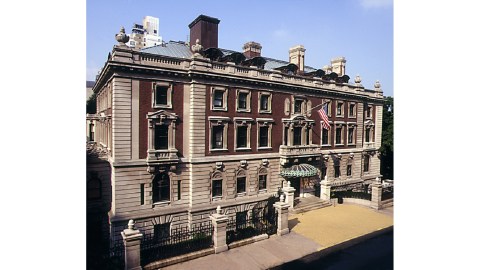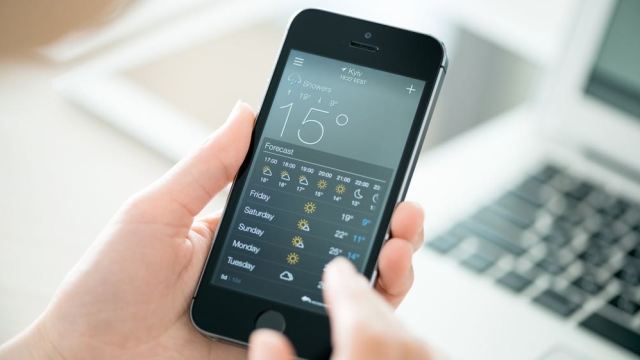Is the Future of Museums Really Online?

In a world where the future of seemingly everything is online, museums — those repositories of the past — seem to resist the internet’s full digital embrace. It’s a question that’s increasingly crossed my mind thanks to a series of unrelated stories that share two common questions — how do people use museums now and how will they in the future? For every digital breakthrough enticing us to step on the virtual gas comes a cautionary tale reminding us to pump those virtual brakes. Ultimately, the online revolution is coming to museums, but is the future of museums really online?
The National Endowment for the Arts (a.k.a., the NEA) recently published several reports of data collected in 2012 (the last year available) regarding how Americans patronize (or don’t patronize) the arts. In When Going Gets Tough: Barriers and Motivations Affecting Arts Attendance, researchers found that “[t]here were common barriers for the 13 percent — 31 million adults — who were interested in a specific event, but did not go for some reason.”
One barrier was time, especially for the “[n]early 60 percent of people with children under age six.” The report concludes that “[t]his finding could inspire arts providers to develop more family-friendly program options,” but, as every parent knows, even “family-friendly program options” can fail in the face of runny noses, potty training, and every other obstacle to simply getting out the door. I don’t see any breakdown of what respondents mean by “time” to reflect whether that’s a problem of inconvenient museum hours or not, but maybe the parents of toddlers were just too busy to answer the follow-ups.
Americans also cited location as another major barrier, with particular difficulties for “retirees, older adults, and adults with physical disabilities.” “If we’re quantifying the value of what we often term ‘access to the arts,’” the report adds in its bottom-line voice, “it’s about 11 million lost audience members or exhibit-goers.” How many millions of dollars do those 11 million lost potential patrons add up to for the cash-starved culture sector?
Finally, “22 percent of those who wanted to attend, but chose not to, said a barrier was not having someone to go with.” This statistic will no doubt be used to justify “single’s events” and other socializing programming at museums, but for the introverted single, such a social setting might actually make museum attendance more intimidating and less attractive.
The study found major motivators for attendance to be “socializing with friends or family members (73 percent); learning new things (64 percent); and supporting the community (51 percent),” thus mirroring at least the solitude barrier. It also found that self-identified middle-class respondents attended more than did self-identified working class respondents and argued that “[t]hwarted interest, rather than lack of interest, may be the cause for lower attendance rates among some audiences.” In other words, people who wanted to go were “thwarted” by economics, education, some other factors, or a combination of factors.
A separate report, titled A Decade of Arts Engagement: Findings from the Survey of Public Participation in the Arts, 2002-2012, found that “adults who attended performing arts or visited museums as children were three to four times as likely to see shows or visit museums as adults.” All those who support arts in schools should smile at the report’s conclusion that “[e]xposure to the arts in childhood turns out to be a stronger predictor of adult arts participation than education, gender, age, or income.” The “get them while they’re young” philosophy remains as true as ever.
But what that adults’ arts participation looks like is changing, according to the report: “Technology is a great enabler of arts creation and participation. In 2012, nearly three-quarters of American adults — about 167 million people — used electronic media to view or listen to art, and large proportions of adults used electronic media to create music or visual art.” That online arts usage separates by gender, too, with “men… more than twice as likely as women to use electronic media to create or perform music, and… also more likely to create visual art online.” (Perhaps that online-usage gender gap might explain the gender gap at so many museum “singles events,” as single women often embarrassingly outnumber single men. [I don’t have hard numbers for that suspicion, only anecdotal evidence from my own single days.])
There are strong arguments from the report for a digital future for museums. Virtual museums such as those found on Google Art Project are open for business 24/7/365 for the busiest parent to enjoy Vincent van Gogh’s Starry Night in their pajamas rather than in line at the MoMA, and in zoomable high definition at that. Those unable to reach New York City’s “museum mile” due to distance and/or disability can break down those barriers online through Google Art Project or the museums’ own individual digitized collections. For art “junkies” such as myself, who might only have been to the Louvre once in the flesh, online collections and multimedia access to the Mona Lisa not only bring back fond memories, but also less fond memories of elbows and shoulders interfering with my enjoyment of La Joconde.
Aside from those inconvenienced by big crowds — especially for blockbuster exhibitions or museum “must sees” — there are those who simply cannot function well in a bustling museum environment. The Pacific Science Center in Seattle, Washington, recognized that people with some form of autism spectrum disorder (ASD), which in the Seattle School District is 10 percent of the special education population, struggle with the overstimulation of big crowds and the standard, fill-your-senses museum treatment. In response, they now open the museum up at special hours exclusively to accommodate people with ASD, especially those children who, as the NEA study suggests, could most benefit from the early experiences.
Museums also benefit from a virtual presence when the real-world presence isn’t available. While waiting to reopen this May after major renovations, the Whitney Museum hopes to stay in the minds of patrons by staying on their screens thanks to an expansion of its online database from a paltry 700 items to a generous 21,000 items by more than 3,000 artists. In addition to works temporarily unavailable, works that may never be seen physically again can be “seen” online once more. Ziv Schneider’s The Museum of Stolen Art allows visitors to virtually view art stolen or looted (especially in the Middle East during recent wars) and never recovered. Wearing virtual reality goggles and listening to the audio tour, the visitor can have a virtual museum experience unavailable in the physical world. Schneider’s project not only provides access otherwise impossible, but also educates visitors about the reality of stolen art and, possibly, could lead to the art’s recovery if the right person remembers seeing one of those works hiding in plain sight.
But what are the cons of museums going totally digital? As George Carlin joked, “stuff” is what makes the world go round. Museums collect the “stuff” of civilizations. When humans hunted and gathered, stuff held us back. Agrarianism let us settle down with our “stuff.” Collecting “stuff” became a badge of being civilized. Museums let us save all that “stuff” (along with the badges of civilization we won for having “stuff”). As long as we need “stuff,” we’ll need museums.
However, just as we evolved to need and have “stuff,” will we evolve again as part of the digital age to no longer need “stuff,” or perhaps just need virtual, online “stuff”? Anyone who’s converted to digital music players or text readers will gleefully toss their CDs and books onto the scrapheap of history. Accounts of the death of CD music sales and music sales entirely are hardly exaggerated. The publishing industry, especially newspapers, is on life support. When the book-loving dinosaurs (myself included) go extinct, perhaps we’ll finally see the dawn of a new, fully digital age.
Still, can museums ever go totally digital? Isn’t there still something to the aesthetic experience — the visceral thrill — of being in front of the physical thing itself? The Louvre can digitize the Mona Lisa all it wants, but crowds will still flock to Paris and endure the crowds to see the smile (shockingly small after all the hype) with their own, real-world eyes. Hyperallergic’s Hrag Vartanian editorialized last year that the best way to save museums is to break them up, similar to the idea of libraries splitting up their collection among branches, thus decentralizing the collection to reduce crowds while increasing access.
As Vartanian points out, The Louvre — the most visited museum on Earth — already has “branches” in the Louvre-Lens and (not yet open) Louvre Abu Dhabi, so there’s a precedent for Vartanian’s model. He also cites Greece’s effort a decade ago to decentralize outward from Athens as “help[ing] place artifacts in their geographic context while spreading tourist dollars to remote areas.” I like Vartanian’s suggestion of using a library model, but there’s also just one problem — that library model is also dying. Physical decentralization addresses the location barrier in one way, but the fact that more people are accessing the arts online, just as more people are reading online more and on paper less, remains a problem.
Perhaps The Atlantic’s Robinson Meyer is right to tout that “The Museum of the Future Is Here” in the form of the new Cooper-Hewitt, National Design Museum in New York City. Don’t let the old-fashioned façade of the Andrew Carnegie Mansion (shown above), home to the Cooper-Hewitt, fool you. Beneath that façade beats a new, digital heart. Each visitor receives a “pen” with which they can access digital information on the works they see and “collect” them digitally to enjoy at home. Read the whole article to discover the multiple ways (including hopes of becoming a link “hub” a la Wikipedia, but for the arts) the Cooper-Hewitt has reached out to the digital world while retaining its physical tradition, but the money quote from Meyer is this: “The Cooper Hewitt has transformed into an organization not unlike Wikipedia, Pinterest, or, for that matter, The Atlantic: Somewhere between a media and a tech firm; it is a Thing That Puts Stuff on the Internet. Or, more precisely, A Thing That Puts Things on the Internet.” Maybe you can have your “stuff,” and be digital, too.
The question of whether museums (and the rest of the world) will go online is moot. The real questions are how and how soon. Will museums keep pace with the world around them and remain relevant to new generations raised on tablets? Or will they lag behind and hope for a nostalgic niche market similar to those who market vinyl albums to music lovers who can’t abide iTunes? Cooper-Hewitt’s transformation may or may not be a model for other museums, but at least it’s a model to keep the discussion and questioning going.
[Image: Facade of the Andrew Carnegie Mansion, home of the Cooper-Hewitt National Design Museum, New York, NY. Image source:Wikipedia.]





